Use VCE Exam Simulator to open VCE files
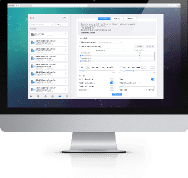
CCSK CSA Practice Test Questions and Exam Dumps
Do all cloud services rely on virtualization technologies?
A. False
B. True
Correct Answer: B (True)
Explanation:
Cloud services commonly utilize virtualization technologies, but it is important to understand the underlying mechanisms that enable these services. Virtualization is a fundamental component that allows multiple virtual instances (e.g., virtual machines, containers, etc.) to run on a single physical server. In a cloud computing environment, these virtual instances are isolated from each other, allowing cloud providers to offer flexible, scalable, and cost-efficient services. Virtualization ensures that resources such as computing power, storage, and networking are shared efficiently among multiple users.
Option A: False – This option is incorrect. Most cloud services do indeed rely on virtualization technologies to create virtualized resources. However, there are exceptions. For instance, serverless computing (like AWS Lambda) abstracts away the underlying infrastructure, meaning that while it may not involve traditional virtualization of individual virtual machines, it still relies on some form of virtualization behind the scenes to manage computing resources. Therefore, even cloud services that don’t expose virtualization to users still typically use it behind the scenes.
Option B: True – Correct Answer. The majority of cloud services (Infrastructure as a Service, Platform as a Service, etc.) use virtualization technologies in some form, such as virtual machines (VMs) or containers. Virtualization allows for efficient resource allocation and rapid provisioning, which are core advantages of cloud computing. Cloud providers like Amazon Web Services (AWS), Google Cloud, and Microsoft Azure heavily use virtualization to manage resource distribution across customers.
The answer is True (B) because virtualization is integral to most cloud services. It enables the abstraction of physical hardware, providing scalable and efficient solutions for customers.
If you notice gaps in the network logging data, what steps can you take to address the issue?
A. Nothing. There are simply limitations around the data that can be logged in the cloud.
B. Ask the cloud provider to open more ports.
C. You can instrument the technology stack with your own logging.
D. Ask the cloud provider to close more ports.
E. Nothing. The cloud provider must make the information available.
Correct Answer: C (You can instrument the technology stack with your own logging.)
Explanation:
Network logging is an essential aspect of monitoring and securing cloud environments. Gaps in network logging data could occur due to various reasons, such as limitations in the cloud provider’s default logging configuration, service-specific logging restrictions, or the cloud infrastructure’s inability to capture certain types of traffic. In such cases, it is important to take steps to ensure adequate logging for network visibility.
Option A: Nothing. There are simply limitations around the data that can be logged in the cloud. – This option is incorrect because it assumes that no further action can be taken. In reality, if there are gaps, it may be possible to adjust logging configurations or use additional logging mechanisms to fill those gaps.
Option B: Ask the cloud provider to open more ports. – This option is not relevant to the issue of missing log data. Opening more ports might be necessary for network connectivity, but it won’t address gaps in logging data, which is a configuration or data capture issue.
Option C: You can instrument the technology stack with your own logging. – Correct Answer. If the cloud provider’s logging is insufficient or incomplete, it is possible to instrument your own technology stack with custom logging mechanisms. This could include deploying agents, using third-party monitoring tools, or configuring custom logging solutions to capture data that may be missing from the cloud provider's default logging.
Option D: Ask the cloud provider to close more ports. – This option is incorrect. Closing ports may have an impact on the network security posture but will not address missing or incomplete logging data. Network traffic monitoring and logging require proper configuration on both the provider and user side.
Option E: Nothing. The cloud provider must make the information available. – While cloud providers generally offer extensive logging options, they might not always log every detail that a customer needs. As such, relying solely on the provider is not the best approach, especially if custom logging is required.
The correct approach is to instrument the technology stack with your own logging (Option C). If there are gaps in the default network logs provided by the cloud service, you can take steps to enhance visibility and capture relevant network data on your own. This ensures more comprehensive monitoring and helps fill any gaps in network security.
In the Cloud Controls Matrix (CCM) tool, what term is used to describe a measure that modifies risk and includes processes, policies, devices, practices, or any other actions that help to modify risk?
A. Risk Impact
B. Domain
C. Control Specification
Correct Answer: C (Control Specification)
Explanation:
The Cloud Controls Matrix (CCM) is a framework provided by the Cloud Security Alliance (CSA) to help organizations assess the security posture of cloud services. The CCM provides a detailed set of control specifications to assess the risks in cloud environments. These controls help modify risk and are designed to address a wide range of security concerns, from access control to incident response.
Option A: Risk Impact – This option refers to the potential consequences or effects of risks, rather than the measures used to modify them. Risk impact is the result of a risk event occurring, not a process or practice used to mitigate the risk.
Option B: Domain – This term is not directly related to modifying or addressing risks within the CCM tool. A domain in the context of the CCM refers to a high-level category that groups related controls (such as access control, cryptographic protections, etc.). It is not the term used for the specific measures taken to mitigate risk.
Option C: Control Specification – Correct Answer. Control specifications are the actual measures or actions that modify risk in the context of the CCM. These could include policies, procedures, technologies, and practices that an organization implements to reduce or manage risk effectively. Control specifications are designed to be actionable and practical for organizations to use as they develop or assess their cloud security posture.
The correct term to describe a measure that modifies risk in the CCM tool is Control Specification (Option C). These specifications are the practices and measures implemented to modify and reduce risks in cloud environments.
Who is responsible for securing the physical infrastructure and the virtualization platform in a cloud environment?
A. The cloud consumer
B. The majority is covered by the consumer
C. It depends on the agreement
D. The responsibility is split equally
E. The cloud provider
Correct Answer: E (The cloud provider)
Explanation:
In cloud environments, security responsibilities are typically divided between the cloud provider and the cloud consumer based on the service model (e.g., IaaS, PaaS, SaaS). Understanding who is responsible for securing various layers of the cloud stack is crucial for organizations to maintain proper security measures and ensure compliance with relevant standards.
Option A: The cloud consumer – This option is incorrect because, in most cloud service models, the cloud consumer is not responsible for securing the physical infrastructure or the underlying virtualization platform. The cloud consumer is primarily responsible for securing the data, applications, and operating systems they deploy.
Option B: The majority is covered by the consumer – This option is partially correct but still misleading. While the cloud consumer does assume responsibility for securing the services and data within the cloud, the physical infrastructure and virtualization platform are typically managed by the cloud provider, not the consumer.
Option C: It depends on the agreement – While specific responsibilities can be clarified in a service level agreement (SLA), the general rule is that the cloud provider handles the security of physical infrastructure and the underlying virtualization platform. However, the specifics of an agreement may outline some shared responsibilities, but the provider typically takes care of the core infrastructure.
Option D: The responsibility is split equally – This is incorrect. The security responsibility is not always split equally. In Infrastructure-as-a-Service (IaaS) environments, the cloud provider typically manages the physical infrastructure and hypervisor (virtualization platform), while the consumer is responsible for the operating systems, applications, and data. In SaaS models, the provider manages almost everything, and in PaaS, both parties share security responsibilities based on the specific platform.
Option E: The cloud provider – Correct Answer. The cloud provider is primarily responsible for securing the physical infrastructure and the underlying virtualization platform. This includes ensuring the hardware, network, and hypervisor are properly secured and maintained. The consumer is responsible for securing the software, data, and services they use within the cloud environment.
The cloud provider (Option E) is responsible for the security of the physical infrastructure and virtualization platform. This responsibility is typical in most cloud service models, with consumers focusing on securing the software, applications, and data they deploy.
What specific factors must be understood about data in the context of legal, regulatory, and jurisdictional considerations?
A. The physical location of the data and how it is accessed
B. The fragmentation and encryption algorithms employed
C. The language of the data and how it affects the user
D. The implications of storing complex information on simple storage systems
E. The actual size of the data and the storage format
Correct Answer: A (The physical location of the data and how it is accessed)
Explanation:
When managing data, especially in the context of cloud computing, legal, regulatory, and jurisdictional factors must be considered because these factors influence the way data must be handled, accessed, and stored. Various countries have specific laws regarding data privacy and security, and these laws may require that data be stored within certain geographical boundaries, or that access to the data be restricted.
Option A: The physical location of the data and how it is accessed – Correct Answer. This is one of the most important factors to consider due to legal and regulatory requirements. For instance, countries such as the European Union have strict data protection regulations (GDPR), which mandate that personal data of EU citizens must be stored within the EU or in countries with equivalent privacy laws. Additionally, data access controls must adhere to the jurisdiction’s regulations regarding who can access the data and under what circumstances.
Option B: The fragmentation and encryption algorithms employed – While encryption and fragmentation techniques are important for data security, they are not as directly tied to legal, regulatory, and jurisdictional factors as the physical location of the data. Data may still need to be stored in certain locations regardless of how it is encrypted.
Option C: The language of the data and how it affects the user – This factor might be relevant for user experience but is not specifically tied to legal, regulatory, or jurisdictional concerns. The language of the data can affect localization efforts, but it doesn't address compliance issues regarding the storage or access of data across regions.
Option D: The implications of storing complex information on simple storage systems – This factor is more about the technical feasibility and capacity of storage systems rather than legal considerations.
Option E: The actual size of the data and the storage format – While important for system capacity and performance, the size of the data and storage format don't directly address legal or jurisdictional concerns.
The most crucial aspect regarding legal, regulatory, and jurisdictional factors is understanding the physical location of the data and how it is accessed. Different jurisdictions have specific laws about where and how data should be stored, and understanding these requirements is key to maintaining compliance.
Which cloud service model allows organizations to provide access to databases or applications for clients or partners?
A. Platform-as-a-Service (PaaS)
B. Desktop-as-a-Service (DaaS)
C. Infrastructure-as-a-Service (IaaS)
D. Identity-as-a-Service (IDaaS)
E. Software-as-a-Service (SaaS)
Correct Answer: A (Platform-as-a-Service - PaaS)
Explanation:
Cloud service models provide different levels of abstraction, and each model offers various functionalities to organizations depending on their needs. When providing access to databases or applications for clients or partners, the level of control and customization plays a significant role in choosing the correct service model.
Option A: Platform-as-a-Service (PaaS) – Correct Answer. PaaS allows companies to build, deploy, and manage applications without worrying about the underlying infrastructure. It provides the necessary platform for clients to access databases or applications, allowing for client-based access to these resources. It enables developers to focus on creating applications without managing the hardware or software infrastructure.
Option B: Desktop-as-a-Service (DaaS) – DaaS delivers virtual desktops to users. It allows businesses to provide users with access to a desktop environment rather than directly accessing databases or applications. This model is focused on providing users with virtual desktops rather than managing databases or applications.
Option C: Infrastructure-as-a-Service (IaaS) – IaaS provides the basic infrastructure resources like virtual machines, storage, and networking. While it allows organizations to host applications and databases, IaaS does not typically offer the tools or services to provide direct access to those applications for clients or partners. It is more about providing foundational infrastructure rather than enabling client access.
Option D: Identity-as-a-Service (IDaaS) – IDaaS is a cloud service model focused on identity management, authentication, and access control. It does not focus on providing direct access to databases or applications but rather manages user identities and access permissions.
Option E: Software-as-a-Service (SaaS) – SaaS provides ready-made applications over the internet. While SaaS applications can be accessed by clients or partners, it does not allow for providing custom access to databases or applications in the same way that PaaS does. SaaS is typically used for end-user applications rather than backend access to databases.
The correct service model to provide client-based access to databases or applications is Platform-as-a-Service (PaaS). PaaS allows companies to develop and manage applications with ease while providing necessary infrastructure and access to databases or applications for clients or partners.
Which domain of the Cloud Control Matrix (CCM) do the following controls belong to?
GRM 06: Policy
GRM 07: Policy Enforcement
GRM 08: Policy Impact on Risk Assessments
GRM 09: Policy Reviews
GRM 10: Risk Assessments
GRM 11: Risk Management Framework
A. Governance and Retention Management
B. Governance and Risk Management
C. Governing and Risk Metrics
Correct Answer: B (Governance and Risk Management)
Explanation:
The Cloud Control Matrix (CCM) is a framework that provides guidelines for securing cloud services. It includes a series of controls that align with various domains to help ensure proper security, governance, risk management, and compliance in cloud environments.
Option A: Governance and Retention Management – This option refers to governance policies related to data retention and management in cloud environments, but it does not fit the specific controls listed here. The listed controls focus more on the broader governance and risk management, not just retention.
Option B: Governance and Risk Management – Correct Answer. This domain is concerned with managing the overall risk and governance strategies within the cloud environment. The controls listed here—policy creation, enforcement, risk assessments, and the overall risk management framework—directly relate to the overarching management of governance and risk. They are designed to help organizations define, enforce, and measure policies to mitigate risks and ensure compliance.
Option C: Governing and Risk Metrics – This option sounds similar, but it refers more to measuring and tracking specific risk metrics rather than the holistic governance and risk management process. The listed controls go beyond just metrics and focus on establishing a framework for managing risk at a higher level.
The listed controls (GRM 06 through GRM 11) are best categorized under the Governance and Risk Management domain in the Cloud Control Matrix. They deal with the processes, policies, and frameworks required to manage risk and governance in cloud environments.
What attack surfaces are introduced by virtualization technology?
A. The hypervisor
B. Virtualization management components apart from the hypervisor
C. Configuration and VM sprawl issues
D. All of the above
Correct Answer: D (All of the above)
Explanation:
Virtualization technology introduces several potential attack surfaces due to its complexity and the variety of components it involves. Understanding these attack surfaces is essential for securing virtualized environments.
Option A: The hypervisor – Correct Answer. The hypervisor is a key component of any virtualization setup. It manages the virtual machines (VMs) and allocates resources such as CPU and memory. Since the hypervisor operates at the host level and has control over multiple VMs, it is a high-value target for attackers. If the hypervisor is compromised, it can lead to full control over all VMs hosted on the machine.
Option B: Virtualization management components apart from the hypervisor – Correct Answer. Beyond the hypervisor, other components such as the management console (e.g., VMware vCenter or Microsoft System Center) are responsible for managing the lifecycle of VMs. These tools often have extensive control over the virtualized environment, including the ability to provision and decommission VMs, configure network settings, and access VM data. These management interfaces are prime targets for attackers.
Option C: Configuration and VM sprawl issues – Correct Answer. VM sprawl occurs when VMs are deployed without proper oversight or tracking, leading to an increase in the number of virtual machines that are difficult to manage or secure. Improper configurations, such as unnecessary open ports or weak security settings on VMs, also contribute to attack surfaces. Without proper management and configuration, these VMs can become vulnerable points of entry for attackers.
Virtualization introduces multiple attack surfaces that need to be carefully managed to ensure security. These include the hypervisor, virtualization management components, and VM sprawl and configuration issues. All of these represent potential vulnerabilities that could be exploited by attackers if not properly secured. Therefore, the correct answer is All of the above. Proper security practices, including strong access controls, regular updates, and continuous monitoring, are essential to mitigate these risks.
Is it necessary to extensively harden APIs and web services, considering that they must be prepared for attacks from both authenticated and unauthenticated adversaries?
A. False
B. True
Correct Answer: B (True)
Explanation:
APIs (Application Programming Interfaces) and web services are integral components of modern software applications, enabling communication between different systems, both inside and outside of an organization. Given their central role in allowing data exchanges, these services are often exposed to the internet and thus become attractive targets for attackers.
Why APIs and Web Services Must Be Hardened:
Exposed to Attacks: APIs and web services are exposed to a variety of attacks, whether from unauthenticated users trying to exploit vulnerabilities or from authenticated users attempting to misuse their access. Cyber attackers can exploit weaknesses such as insecure endpoints, poor input validation, or misconfigured authentication mechanisms.
Authenticated Attacks: Even authenticated users with valid credentials can launch attacks. These attacks might include privilege escalation, where an attacker with limited access attempts to gain higher privileges, or abuse of the API’s functionality, such as exploiting it to gather sensitive data.
Unauthenticated Attacks: On the flip side, unauthenticated adversaries can also target APIs and web services. Common attacks such as Distributed Denial of Service (DDoS), SQL injection, and man-in-the-middle attacks can occur if the service isn’t properly secured.
API Hardening Best Practices:
Authentication and Authorization: Implementing strong authentication mechanisms, such as OAuth or multi-factor authentication (MFA), ensures that only authorized users can access sensitive data.
Input Validation: Ensuring that all inputs received by the API are validated properly reduces the risk of injection attacks or malicious data.
Encryption: Ensuring data is encrypted both in transit and at rest prevents attackers from accessing sensitive information.
Rate Limiting and Monitoring: Monitoring the API for unusual activities and limiting the number of requests made by a user can help prevent DDoS attacks and other forms of abuse.
In conclusion, APIs and web services must be hardened to handle attacks from both authenticated and unauthenticated attackers, making the statement True.
Which of the following cloud computing characteristics does NOT impact incident response?
A. The on-demand self-service nature of cloud computing environments
B. Privacy concerns for co-tenants regarding the collection and analysis of telemetry and artifacts associated with an incident
C. The possibility of data crossing geographic or jurisdictional boundaries
D. Object-based storage in a private cloud
E. The resource pooling practiced by cloud services, in addition to the rapid elasticity offered by cloud infrastructures
Correct Answer: D (Object-based storage in a private cloud)
Explanation:
In the context of incident response (IR), it’s crucial to understand the cloud computing characteristics that affect how incidents are managed, detected, and investigated. The nature of cloud environments introduces unique challenges compared to traditional on-premises environments.
Why Each Option Matters (Except D):
Option A: The on-demand self-service nature of cloud computing environments: The self-service model in cloud environments enables users to provision resources without intervention. While this flexibility is beneficial for operations, it can also create challenges in incident response. For example, unauthorized users could provision and deploy potentially malicious resources, complicating investigation and containment efforts.
Option B: Privacy concerns for co-tenants regarding the collection and analysis of telemetry and artifacts associated with an incident: In a shared multi-tenant cloud environment, privacy concerns arise when incidents affect one tenant’s resources but might involve shared infrastructure. Ensuring that forensic data collection and analysis do not violate the privacy of other tenants is a key challenge in incident response in the cloud.
Option C: The possibility of data crossing geographic or jurisdictional boundaries: Cloud computing often involves data being stored across multiple regions or countries, making it difficult to track, collect, and analyze data during an incident. Different legal and regulatory requirements across jurisdictions may affect the response to an incident.
Option E: The resource pooling practiced by cloud services, in addition to the rapid elasticity offered by cloud infrastructures: Cloud services allow for resource pooling, where resources such as compute and storage are shared across multiple tenants. This dynamic allocation and rapid elasticity mean that an attacker could spin up new instances or modify configurations quickly, complicating incident detection and mitigation.
Option D (Object-based storage in a private cloud) does not have as significant an impact on incident response as the other characteristics. Object storage, while different from traditional file storage, is primarily concerned with how data is stored and accessed. The location of the data and how it’s managed does not directly complicate incident response in the same way that factors like privacy, geographic boundaries, or resource pooling do.
While many characteristics of cloud computing impact incident response, object-based storage in a private cloud is the least likely to pose a direct challenge. Thus, Option D is the correct answer as it does not significantly impact incident response compared to the other options.
Related Exams

Top Training Courses
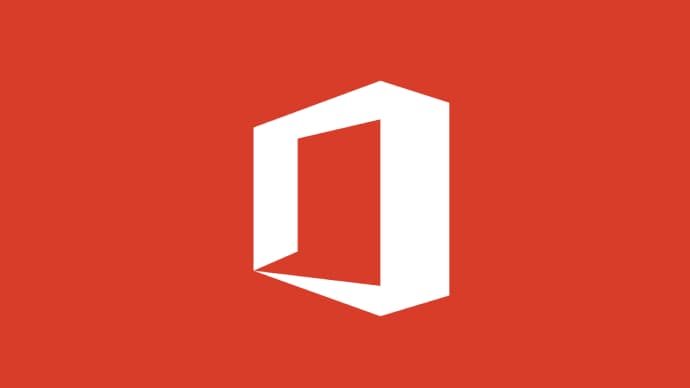



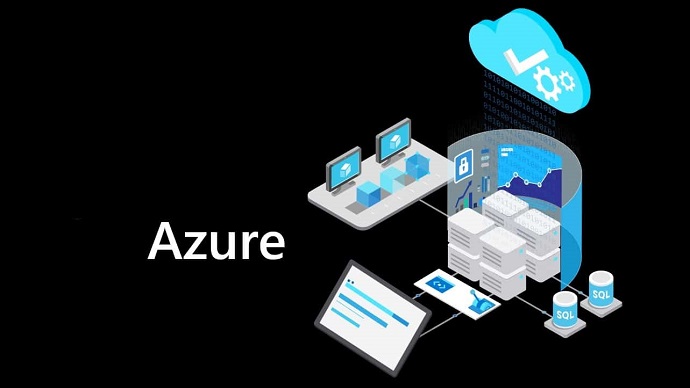

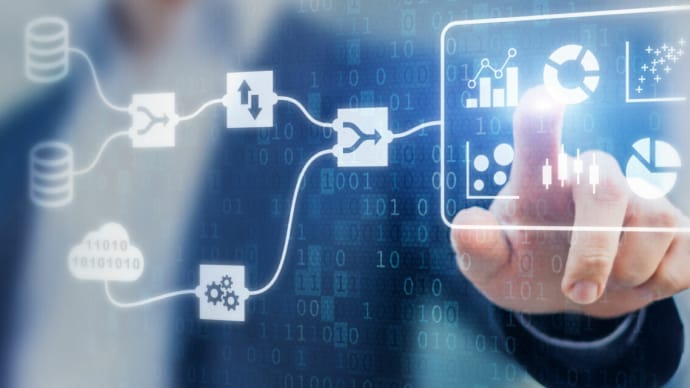
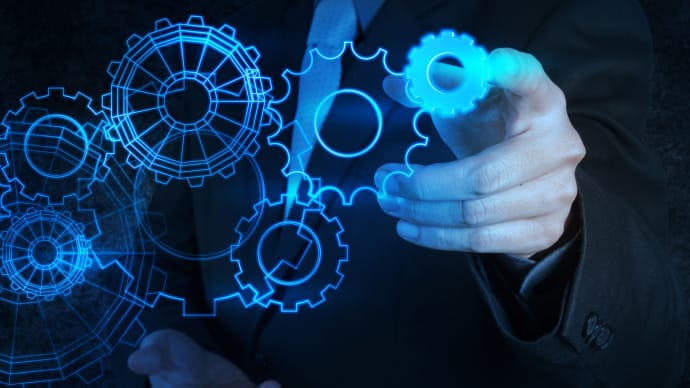
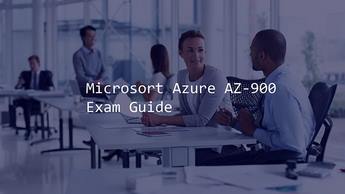


SPECIAL OFFER: GET 10% OFF
This is ONE TIME OFFER

A confirmation link will be sent to this email address to verify your login. *We value your privacy. We will not rent or sell your email address.
Download Free Demo of VCE Exam Simulator
Experience Avanset VCE Exam Simulator for yourself.
Simply submit your e-mail address below to get started with our interactive software demo of your free trial.